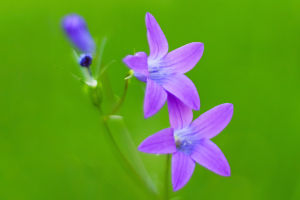Seed germination is a critical stage in the plant life cycle, marking the transition from dormancy to active growth.
This process involves a complex series of physiological and environmental factors that enable the seed to transform from a potential state of life to the beginning of a new life.
The structure of the seed, environmental conditions, and internal physiological mechanisms together determine the success of germination.
The outer structure of the seed is usually surrounded by the seed coat, which plays an important protective role in the growth and germination of the seed.
The thickness and nature of the seed coat vary from plant species to plant species, and some seeds have a hard seed coat that can maintain a dormant state for a longer period under adverse environmental conditions.
To germinate, the seed needs to experience the influence of suitable conditions such as temperature, moisture, oxygen, and light. When these conditions are met, the physiological activities within the seed are activated, preparing it for germination.
The process of seed germination can generally be divided into several stages. First, the seed absorbs water, which is the initial step in germination. This process, known as imbibition, involves the seed absorbing water through tiny pores in the seed coat, causing it to expand.
This expansion activates metabolic activities within the seed, particularly increasing the activity of enzymes such as amylase and protease. These enzymes help break down the nutrients stored in the seed, providing energy and raw materials for subsequent growth.
After the seed absorbs water, the embryo begins to germinate. The embryo is the part of the seed that will grow into the seedling and is usually located at both ends of the seed. As water is absorbed and temperatures rise, the embryo starts to grow and expand outward.
This involves rapid cell division and expansion, with plant growth hormones like auxin playing a critical role. Auxin promotes cell expansion, aiding the embryo in breaking through the seed coat, growing upward, and forming the first stem and leaves.
During this germination process, the internal nutrients stored within the seed are mobilized to support the growth of the embryo. The nutrients stored in most seeds include starch, fats, and proteins, and after germination, these nutrients are converted into usable forms for the growing plant through enzymatic activity.
In legumes, for example, which are rich in protein, the stored protein is broken down into amino acids through enzymatic action to aid in embryo growth.
Oxygen is also vital during germination. After absorbing water, seeds require oxygen to respire and provide energy for cell growth and division. As metabolic activity increases, so does the seed’s need for oxygen.
If the seed is in an oxygen-deficient environment, it may not germinate effectively. This is why proper soil aeration and water retention are essential for successful germination.
As the embryo grows, the roots begin to extend downward into the soil. At this stage, the roots are responsible for absorbing water and nutrients while also providing structural support to the growing plant. The extent of root system development has a direct effect on the growth rate and overall health of the plant.
As the root system develops, the cells at the root tip continuously divide and elongate, a process regulated by various auxins that promote root growth and ensure the plant can efficiently access resources from the soil.
The germination process is not only influenced by external environmental conditions but also by internal physiological mechanisms within the seed.
Some seeds produce substances that inhibit germination during dormancy, ensuring the seed does not germinate under unfavorable conditions. Once the environmental conditions improve, the concentration of these inhibitory substances decreases, allowing the seed to germinate.
Additionally, some seeds require specific treatments to break dormancy, such as exposure to freezing temperatures, scorching, or drying for a set period. These treatments can trigger germination by altering the seed's internal conditions.
Seed germination is a delicate process involving the interaction of various physiological and environmental factors. Through a responsive mechanism to external conditions, seeds manage to break through the soil at the appropriate time and begin new life.
This process is crucial not only for plant reproduction and maintaining the ecosystem's balance but also for agricultural production and environmental conservation. Understanding the mechanisms of seed germination can help enhance crop yields and provide valuable insights for plant protection and management.
Seed germination is a key stage in the plant life cycle, where the seed transitions from dormancy to active growth through a coordinated response to environmental conditions.
Temperature, moisture, oxygen, and light are essential to initiating this process, while internal physiological mechanisms ensure that germination occurs at the right time.
Through the breakdown of stored nutrients and the growth of the embryo, the seed is equipped to begin its journey as a new plant. The roots anchor into the soil to absorb nutrients, and the plant eventually emerges from the ground to continue its growth.


